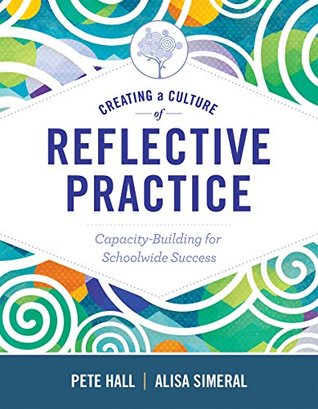Kindle Notes & Highlights
by
Pete Hall
Read between
January 12 - February 1, 2021
Then again, what mechanisms are in place to monitor and evaluate our allocation of the funds we do receive and the impact of those expenditures?
We must improve teacher quality, because teacher quality—and quality instruction—is the number-one determinant of student success.
Then, in their scathing follow-up, The Mirage, they uncovered an even uglier reality: despite expenditures of nearly $18,000 per teacher per year on various forms of professional development, nearly 70 percent of teachers did not improve or declined in their performance over a period of two to three years, suggesting a "pervasive culture of low expectations for teacher development and performance" (2015, p. 2). As a result, and not surprisingly, teacher morale is in a steady decline, with large numbers of educators leaving the profession. A recent report for the Alliance for Excellent
...more
Ende (2016, pp. 8–9) continues with four key characteristics of professional development that sticks: it is meaningful, it is highly engaging, the audience has ownership, and it has an impact on professional practice and student learning. Let's explore these commonsense items one at a time.
One of our biggest misconceptions about professional learning is that it's an event.
Paying teachers for the full days they're working anyway, let's reconfigure the work day to include regular teacher collaboration, job-embedded professional development, the pursuit of action research projects, data analysis, and regular opportunities for extending their professional learning endeavors. What if teaching became a true profession, in every sense of the word, and we paid our teachers to learn, grow, collaborate, reflect, and augment their performance every day, thereby increasing their positive impact on student learning? What if we truly put our money where our research is?
culture of reflective practice is an organization that embraces reflective growth as the primary driving force behind continuous, lasting improvement. In such an organization, members speak the language of reflection, engage in rigorous metacognitive tasks, and earnestly support their individual and collective growth. The entire organization oozes self-reflection.
a culture of reflective practice describes the conditions that enable all our strength-based, adult-differentiated, student-learning-focused efforts to be successful. It is composed of the factors that embrace change, that clarify the vision and goals, that communicate openly and transparently, that work together to make steady progress toward organizational outcomes, and that facilitate deep reflection that leads to ongoing, steady, enduring professional growth.
The foundation of a culture of reflective practice is built upon seven fundamentals. These Building Teacher Capacity (BTC) Fundamentals are the foundational pieces necessary to support and guide schools and districts through the process of shifting school culture and climate, growing a reflective mindset, and establishing a culture of reflective practice: Relationships, Roles, and Responsibilities Expectations and Communication Celebration and Calibration Goal Setting and Follow-Through Strategic PLC and Teacher-Leadership Support Transformational Feedback Differentiated Coaching
we've got to address that spongy gray matter between our ears. Think about it.
The key to increasing our impact—to raising student achievement—lies in our ability to engage in frequent, accurate, and deep self-reflection.
Our hypothesis is rather simple: Our ability to reflect frequently, accurately, and deeply about our actions is what sets apart the excellent from the mediocre.
Our working definition of self-reflection includes an overarching concept (i.e., the act of exerting mental energy about our professional responsibilities) and a series of very specific reflective behaviors:
Gaining awareness of our educational surroundings (students, content, and pedagogy). Planning deliberately to take action with intentionality. Assessing the impact of our decisions and actions. Adjusting our course of action based on the feedback we receive from those assessments.
The Reflective Cycle
"If what a teacher does is consonant with what is now known about cause-effect relationships in learning, and if that teacher's decisions and actions reflect awareness of the current state of the learner and the present environment, then learning will predictably increase"
The capacity-building model we propose is based on the idea that individuals who are self-reflective will exhibit these characteristics: They will think about their thinking, developing metacognitive awareness and "critical thinking" skills (Costa, 2001; Costa & Kallick, 2008; Dewey, 1933; Schön, 1983). They will demonstrate a growth mindset (Dweck, 2006). They will be more discerning, analytic, and insightful about their practice (Danielson, 2007). They will have more heightened sensitivity to their students' moods, engagement, understanding, and confusion (Medina, 2008). They will have an
...more
This highlight has been truncated due to consecutive passage length restrictions.
The skill of self-reflection transcends all other skills, strategies, and teaching approaches. In fact, it strengthens us in all areas.
You can actually think yourself into or out of situations. You can make yourself ill with your thoughts and by the same token you can make yourself well by the use of a different and healing type of thought. Think one way and you attract the conditions which that type of thinking indicates. Think another way and you can create an entirely different set of conditions. (1952, p. 169)


